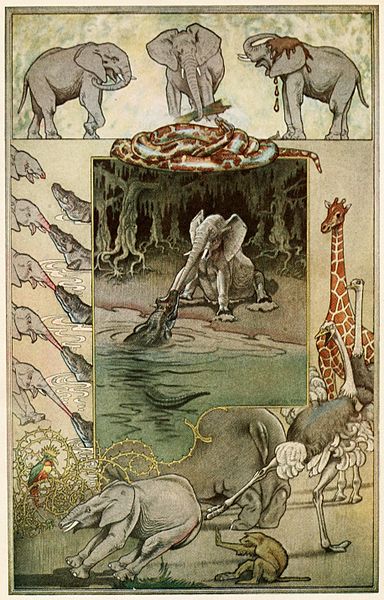A Very Apologetic Non-Apology
In 1992 Frances Whitehead, at the time the Editorial Director at Mills & Boon, had an article published about popular romance, in which she traced its history back to "the Greek novels of the 2nd and 3rd centuries AD" (62). She goes on to mention Richardson and Austen, then observes that
Throughout the 19th century, romance continued to appear in all guises and those at the top of the literary tree influenced the writers below them. [...] This curious situation, with romance simultaneously occupying the high and the low ground - the literary and the lowbrow - has continued in the present century. (Some romantic passages from D H Lawrence could be said to qualify for inclusion in both categories.) But whereas romantic love is an acceptable theme for a "literary" author, it is often a source of ridicule in more popular, down-market fiction. (63)
This sounded to me like a defence of popular romance novels, so I read on eagerly, and was pleased to see Whitehead comment that "writing romance isn't like painting by numbers" (64). It began to seem as though the main distinction, in her mind, between "literary" and "genre" fiction, was that, in "genre" fiction, the reader can expect the plot to develop in particular ways, according to which genre is involved:
Having followed the fortunes of hero and heroine throughout the book, the reader demands that they are united for all time. To have them decide that they don't want to spend their lives together would be comparable to James Bond admitting defeat or Christie's Hercule Poirot failing to solve a case. Predictability, the cardinal sin in the "literary" novel, is a necessary and reassuring factor for the reader of genre fiction. (64)
I was, therefore, rather dismayed to see the following statement in the closing paragraphs of the article:
Romantic novels are entertainment, not literature, and do not need to apologize for what they are. They serve their purpose and in the process keep countless women amused and happy, off the valium and out of doctors' surgeries. This in itself is justification. (68)
Sometimes, it seems the defenders of romance are indistinguishable from its detractors.
Edited to add: a response on Twitter reminded me of something I'd read before, which makes me think that Whitehead was probably echoing her boss.
Joseph McAleer, in his Passion's Fortune: The Story of Mills & Boon, states that:
The Mills & Boon imprint, like any successful commodity in a mass market, stands for a quality product, a kind of guarantee of an easy, thrilling, and satisfying read with an obligatory happy ending. This flavourful confection, wrapped in a brightly coloured paperback cover with a dreamy scene, is to many addictive in its escapist nature. Alan Boon, the acknowledged genius behind the stylized Mills & Boon romance, admitted the restorative quality of the novels which he edited for some forty years: 'It has been said that our books could take the place of valium, so that women who take these drugs would get an equal effect from reading our novels.' (2)
It's possible that Boon was just quoting something others had said, but with which he disagreed. However, the context in which it's reported, and Whitehead's reference to valium, make me fairly sure he shared her views and, probably, shaped them.
----
Whitehead, Frances. "Love Makes the World Go Round (?): The Romantic Novel as a Publishing Phenomenon." Logos 3.2 (1992): 62-68. [The article has recently been reprinted elsewhere, and you can read the whole of it here.]


 We've finally moved into our new home and, much as there are still quite a lot of boxes to unpack, there are quite a lot of long-neglected emails in my inbox. One of them pointed me to Sigrid Cordell's "Loving in Plain Sight: Amish Romance Novels as Evangelical Gothic." I'm hoping it'll inspire me to get back down to work again after my long break because, in her introduction, she gives some reasons why it's worth studying romance novels:
We've finally moved into our new home and, much as there are still quite a lot of boxes to unpack, there are quite a lot of long-neglected emails in my inbox. One of them pointed me to Sigrid Cordell's "Loving in Plain Sight: Amish Romance Novels as Evangelical Gothic." I'm hoping it'll inspire me to get back down to work again after my long break because, in her introduction, she gives some reasons why it's worth studying romance novels: The latest issue of the Journal of Popular Culture came out a few days ago and although none of the articles were directly about romance, quite a few of them have some relevance to it. For example, Kirk Combe begins his article about the "bourgeois rake" in rom-coms by stating that
The latest issue of the Journal of Popular Culture came out a few days ago and although none of the articles were directly about romance, quite a few of them have some relevance to it. For example, Kirk Combe begins his article about the "bourgeois rake" in rom-coms by stating that